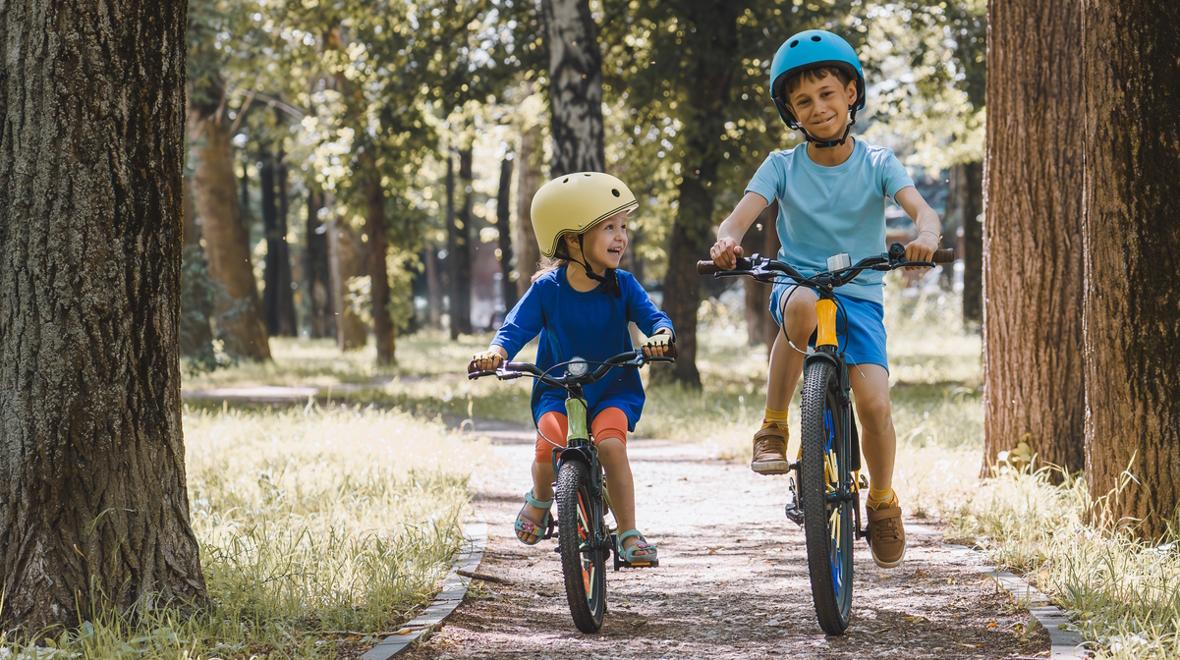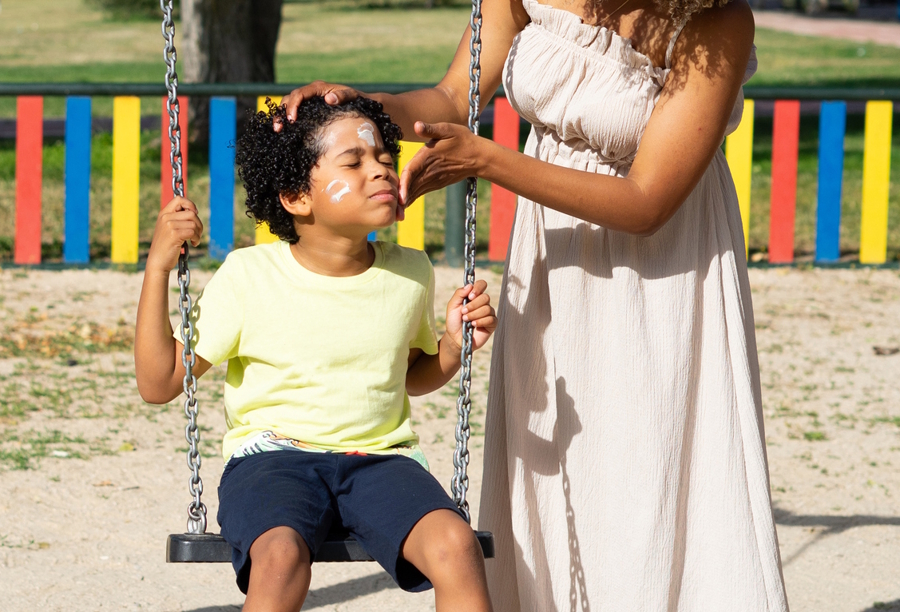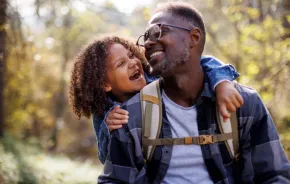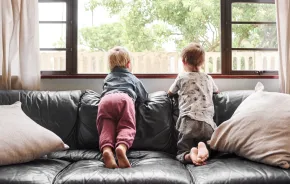
Photo:
iStock
Editor’s note: This article was sponsored by Seattle Children’s Hospital.
The Pacific Northwest’s light-filled, long summer days provide the perfect launching pad for outdoor events and excursions. A little parental prevention and awareness can work wonders in keeping kids healthy as they head outdoors.
“Taking advantage of our wonderful summers is really valuable to the growth of a child,” says Dr. Jay Santos, medical director for the urgent care at Seattle Children’s Hospital. “Let’s mitigate risk where we can.”
Santos shared 12 tips that will keep kids away from urgent care and out exploring this summer.
1. Bounce and jump smart
As kids head to their neighbor’s trampoline or into a summer festival’s bouncy house, the risk for fractures and spine injuries arise. More than 100,000 children experience trampoline-related injuries each year in the United States, according to the American Academy of Pediatrics (AAP).
Some guidance can help reduce those figures. To start, kids younger than age 6 shouldn’t use trampolines, Santos advises. Another big injury reduction strategy: One kid at a time on a trampoline. “In practice, that’s really hard to do,” Santos acknowledges. What may be more realistic is to jump with similar-sized children.
Another useful tip: Avoid the notorious double bounce, in which one child jumps and catapults a friend up in the air. Be aware of the springs and coverings on the trampoline, which can cause injuries if someone mistakenly lands on them or gets a leg stuck in the spaces around the edge.
2. Play it safe on playground and fields
Summer playground injuries are fairly common reasons for seeking medical care; falls are the leading culprit. Each year, about 200,000 children end up in the emergency room for playground-related injuries, according to the U.S. Consumer Product Safety Commission. Tripping and falling on or off play structures can also lead to bumps, bruises and breaks. Parents can supervise playground activities, and ensure that kids are playing on well-maintained, age-appropriate equipment.
A less well-known risk comes from sports overuse injuries, Santos explains. These can increase during the summer when there’s more time to play. Repetitive motions while playing sports can injure small and growing joints, and are common enough to garner medical nicknames such as little leaguer’s elbow or jumper’s knee. Encouraging rest periods, sports variety and safe training can help.
3. Respect the summer heat
Kids just love to play and won’t let anything stop them, including the heat, Santos says. That’s why it’s important for adults to create breaks in the shade and ensure children are drinking plenty of water. Consider planning outdoor activities earlier in the day or later in the evening when the sun is less intense. On hot days, monitor children for fussy behavior or signs of fatigue. Muscle cramping, nausea and dizziness are also signs a child could be experiencing ill effects from the heat. Another red flag: Not sweating, which can happen when someone is dehydrated. If you notice these signs, push fluids and keep an eye on urine, he says. If it’s darker and more concentrated, it’s a sign your child isn’t hydrating enough.
4. Slather on the sunscreen
Check your weather app for the ultraviolet index (UV) before planning your outdoor excursion. For example, a UV index of 8 means there is a high risk of sunburn and people should minimize sun between 10 a.m. and 4 p.m. During high UV times, using sunscreen is “really valuable,” Santos says. Another helpful rule for children: Check your shadow. If your shadow is shorter than you are, which happens around mid-day, you’re being exposed to higher levels of UV radiation and should seek shade, explains a guide from the Environmental Protection Agency (EPA).
5. Monitor the air quality
Poorer air quality resulting from summer forest fires can severely impact younger kids and elderly adults. Check the Air Quality Index (AQI) before heading outside on smoky days. AQI readings of more than 100 are unhealthy, according to the American Lung Association. As the numbers rise, parents may want to cancel children’s outdoor activities and stay inside, Santos recommends.

6. Block the bugs bites
Even though tick-borne illnesses like Lyme disease are rare in the Pacific Northwest, it’s still good practice to prevent bites with clothing or bug spray. If you spot a tick on your child, use tweezers to pull it out.
While the Puget Sound area has fewer mosquitos than other areas, Santos has still seen children land in the urgent care with “pretty impressive-looking reactions.” These tend to occur on areas with thinner skin such as the back of the hand, an ear lobe or under the eye. Local reactions can be treated with an over-the-counter lotion. Swelling can last for a day or two, and doesn’t necessarily mean there’s an infection, he says. A big distinction to make: Bug bites are generally itchy, but infections usually start a couple days after the bite and become more painful and tender.
7. Protect kids from water hazards
Kids can go under the water really quickly. That’s why it’s important to be within arm’s reach of young children in or near water and inexperienced swimmers in the water, Santos advises. Even when water play or swimming isn’t your plan, it’s important to supervise young children around water. Meanwhile, older children tend to end up in the urgent care for slips and falls around the pool. Make sure your child isn’t running on slippery surfaces. Pool-related urgent care visits can also arise from jumps too close to the diving board or pool’s edge. Always remember, no diving in the shallow end of a pool.
If you’re swimming in the open water, be mindful of the water temperature and wear a life jacket. Even as the air temperature rises, the Pacific Northwest waters can still be quite cold. That means hypothermia can set in before you may realize it. Check the water temperature and limit exposure, especially early in the seasons. Also wear a life jacket if you’re engaging in a water activity like boating or paddle boarding. That can buy you valuable time to get out of water safely even as you experience “cold shock,” explains the National Oceanic and Atmospheric Association.
8. Remember, helmets save lives
Protecting a child’s head is essential when biking, scootering or skating. Research has found, helmets can reduce the risk of head and brain injuries by up to 88 percent for all ages. That’s important because it’s hard to treat head injuries. “We talk about how we can fix a bone, but we generally can’t fix a brain very well,” Santos says. Along with a helmet, parents may also consider additional padding such as elbow and knee guards, though he cautioned that these sometimes offer a false sense of security.
9. Steer clear of flames
During the summer barbecue and camping season, kids can end up in urgent care after getting too close to a grill or campfire. Watch older children carefully around fire sources, and keep younger ones away altogether, he advises.
Another problematic source of childhood burns is playing with fireworks. Santos’ overall advice: Avoid fireworks, including sparklers. Children might not know where to hold sparklers, or could wave them around and accidentally injure someone.
10. Don’t neglect virus prevention.
While winter is undoubtedly the height of respiratory infections, some summer viruses like the common cold stick around. “Families come in surprised that their kid has a cold in the middle of the summer, but there’s always some level of cold virus circulating,” he says. That means continuing best practices like hand washing and staying home if you’re sick are still smart summer strategies.
11. Prevent stomach woes with safe food practices
In general, gastrointestinal (GI) bugs are transmitted by contact. That’s why you should avoid sharing utensils and cups, and frequently wash hands. Another source of GI problems: food that’s undercooked or left out too long. During summer picnics, make sure you fully cook foods like chicken, and avoid leaving items like potato or chicken salad out in the sun for too long. Throw away all perishable foods that have been at room temperature for more than two hours, or one hour if the temperature is more than 90 degrees Fahrenheit, such as at a summer picnic, according to the Food Safety and Inspection Service.
12. Balance risk with reward
Being able to experience new activities is valuable to the growth of a child, Santos emphasizes. Parents can help their child by creating these opportunities while mitigating risk. That means allowing a child to ride a bike but insisting on a helmet. Have a parent watching nearby while a child swims. “There is a balance,” he says. “We talk about the bumps being a normal part of being a kid and growing up. If they do get injured, we’re here to help.”
Additional resources: |
| Sponsored by: |
 |











